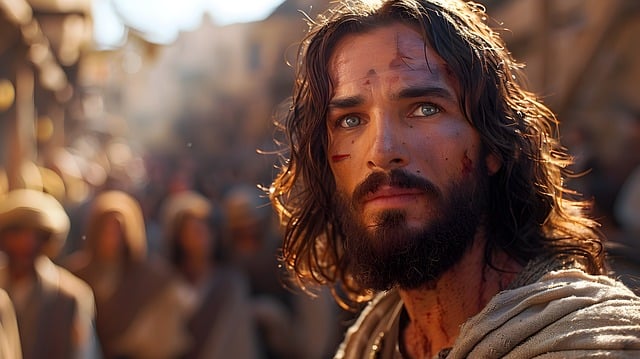When deciding between cremation and traditional burial, consider the balance of environmental impact, cultural significance, and financial cost. Cremation is a sustainable and often less expensive option that offers a variety of personalized ceremonies and memorialization choices, including selecting music and an urn for the cremated remains. It's a modern practice that can be adapted to reflect the deceased's life. In contrast, traditional burial involves interring the body in a casket, which may carry significant cultural and religious importance and involve more extensive financial commitments due to land use, vaults, and potential maintenance of cemetery grounds over time. Both options have evolved to meet diverse needs, with cremation services now incorporating a wide range of rituals and burial options extending from traditional to eco-friendly practices. Eco-conscious individuals may opt for green burials or biodegradable caskets, while those preferring cremation can choose from various end-of-life options, including scattering ashes. Ultimately, the choice reflects an individual's values, beliefs, and environmental considerations, ensuring a meaningful and respectful final tribute.
When contemplating the end-of-life choices, individuals often weigh the options between cremation and traditional burial. This article delves into the distinctions between these two practices, offering insightful comparisons across various dimensions. From understanding the services available in cremation to examining the associated costs and environmental considerations, readers will gain a comprehensive view of what each option entails. Additionally, the article explores cultural nuances and personal preferences that influence these significant decisions. Whether you’re seeking clarity on cremation services or considering traditional burial, this guide provides essential information to inform your end-of-life planning.
- Understanding Your Options: Cremation Services vs Traditional Burial
- Comparing Costs and Environmental Impact: Cremation vs Burial Practices
- Cultural Considerations and Personal Preferences in Cremation Services and Burial Choices
Understanding Your Options: Cremation Services vs Traditional Burial

When contemplating the final disposition of a loved one or planning for one’s own farewell, understanding the options between cremation services and traditional burial is crucial. Cremation offers a simpler, cost-effective alternative to conventional interment. It involves the process of reducing the body to its basic elements through extreme heat and combustion, resulting in cremated remains. This option is often favored for its environmental impact, as it significantly reduces the land use associated with traditional burials. Cremation services can be personalized to reflect the life and preferences of the deceased, from the choice of music to the urn that holds the ashes. These services may include a memorial ceremony, a graveside service, or scattering of the ashes in a meaningful location.
On the other hand, traditional burial is a practice steeped in cultural and religious traditions, where the body is interred in a casket within the earth. This method maintains a physical site for future visitation, remembrance, and legacy. It often involves the purchase of a burial plot, a vault to protect the casket from the elements, and potentially a headstone or marker. The costs associated with traditional burial can be higher due to these additional factors, including the land space required and the ongoing maintenance fees for the cemetery grounds. Both cremation services and traditional burial offer profound ways to commemorate a life lived, each with its own set of considerations regarding cost, religious or cultural significance, environmental impact, and personal preferences. It is important for individuals to explore these options thoughtfully, ensuring that their choices align with their values and the memories they wish to preserve.
Comparing Costs and Environmental Impact: Cremation vs Burial Practices

When contemplating the end-of-life choices for oneself or making arrangements for a loved one, the decision between cremation and burial involves careful consideration of costs and environmental impacts. Cremation services are often perceived as a more economical alternative to traditional burial practices. The cost differential arises from various factors, including the ceremonial aspects, if any, and the expenses associated with maintaining a burial site over time. While cremation can be less expensive initially, it’s important to account for additional costs such as urns, memorial stones, and scattering or interment services. On the other hand, burial entails the purchase of a plot, a headstone, and possibly a mausoleum, which can accumulate over time due to maintenance fees, especially in perpetual care agreements.
From an environmental perspective, both options have their implications. Cremation has been under scrutiny for its energy consumption and emissions, particularly those of carbon dioxide, mercury, and other pollutants. Advances in cremation technology aim to mitigate these environmental impacts by improving efficiency and filtering systems. In contrast, traditional burial practices can consume significant land resources and may involve the use of embalming fluids that contain formaldehyde, a known carcinogen. Eco-friendly burial options, such as biodegradable caskets and natural burial grounds, are gaining popularity as a means to lessen the ecological footprint. Both cremation and burial practices offer unique choices that reflect individual values and environmental considerations, making it essential for individuals to assess both the financial and ecological aspects when deciding on their final wishes or those of their family members.
Cultural Considerations and Personal Preferences in Cremation Services and Burial Choices

When contemplating the end-of-life rituals, cultural considerations and personal preferences play pivotal roles in the decision between cremation and burial. Culturally, the choice between these two practices can be deeply rooted; for instance, some cultures prefer burial as a means of maintaining a physical memorial that can be visited and remembered. In contrast, others embrace cremation as a way to honor beliefs in the cycle of life or due to space constraints in densely populated regions. Personal preferences are equally significant, influenced by religious views, environmental concerns, or a desire for simplicity and cost-effectiveness. The act of selecting between cremation services and burial often reflects one’s values, legacy they wish to leave behind, and the manner in which they envision their final farewell.
In today’s diverse society, the spectrum of choices within both cremation and burial options is vast. Cremation services have evolved to offer a range of ceremonies, from traditional religious rites to secular humanist commemorations. These services may include everything from private, intimate gatherings to large celebrations of life that reflect the deceased’s personality and life achievements. Similarly, burial choices extend beyond ground interment to options like mausoleums or even green burials that aim to minimize environmental impact. Ultimately, the decision between cremation and burial is a deeply personal one, shaped by cultural heritage, religious doctrine, ecological considerations, and individual preferences, ensuring that the final act of remembrance is a fitting tribute to the life lived.
When contemplating the final disposition of a cherished individual’s remains, the choices between cremation and traditional burial present distinct options with unique implications. This article has elucidated the significant differences in costs, environmental considerations, and cultural factors that influence these end-of-life decisions. Ultimately, the choice between cremation services and traditional burial is a deeply personal one, reflecting individual preferences, beliefs, and values. Whether opting for the simplicity and affordability of cremation or the timeless tradition of ground burial, each choice honors the life lived while fulfilling the needs of those left behind. In making this decision, it is crucial to consider the legacy one wishes to leave and the comfort of loved ones as they memorialize and celebrate the life that was.



